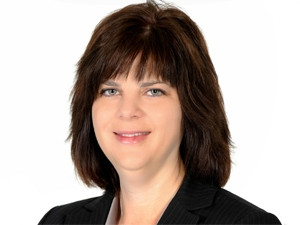
Though the majority of consumers globally are willing to pay additional monthly fees for mobile Internet services that would be 10 times faster than their current connections, South Africans are less inclined to do so.
This was one of the biggest findings of Accenture's Mobile Web Watch 2013 survey, which polled nearly 31 000 consumers in 26 countries to understand what communications service providers (CSPs) must do to address their well-connected consumers' desire for immediacy and increased control of their digital communication and entertainment options.
In the study, Accenture discovered that, as more consumers rely on mobile devices to pay for goods and services, watch videos, operate their intelligent homes and more, mobile providers must expand digital offerings and maintain high-performing networks to attract and keep customers.
The survey found that, according to 97% of respondents, the speed of mobile Internet connections is the top CSP differentiator.
Faster connections = more revenue
According to Accenture, nearly two thirds (63%) of respondents said they would pay additional monthly fees for mobile Internet services that would be 10 times faster than their current connections, indicating that providers' investments in high-speed data networks, such as 4G, could reap benefits.
However, in SA, Accenture says consumers are less inclined to accept extra costs for faster Internet, possibly due to general satisfaction with the current situation.
In an interview with ITWeb, Tammy Whyman, managing executive for strategy and communications at Accenture SA, noted that SA, in terms of behaviour, sits somewhere between a developed market, where users are less likely to pay a premium for faster mobile Internet, and other emerging markets, where there is more willingness to pay a premium.
"Across mature and emerging markets, network speed is the most important criteria for consumers," Whyman explained. "Operators in SA will be challenged to find the right price elasticity between 3G and 4G speeds, which will allow them sufficient profitability to further invest in the network quality expected by consumers."
She added that, in a 100% data world, mobile operators must find a strategy that builds on their strengths, which will be different for each operator. "Operators also need to cultivate partnerships to maintain their share within the digital ecosystem."
It is her belief that local operators will benefit from being able to provide their customers with faster mobile Internet connections, which the majority (63%) of consumers worldwide are willing to pay more for.
"The additional revenues from mobile data can help to compensate for the declining revenues in voice and SMS. However, the revenue streams for the operators are less certain, as the digital ecosystem opens up opportunity for other players in the ecosystem, such as 'over the top' players, device manufacturers, banks, etc."
Spectrum roadblock
Whyman also pointed out that the difficulty in growing LTE in SA lies in the delay in the release of additional spectrum by the Independent Communications Authority of SA (ICASA). "The additional spectrum will be available once SA has converted to digital terrestrial television, creating a 'digital dividend' of radio frequencies that can be used for LTE once analogue television transmission has been decommissioned."
Nonetheless, there are disparities in consumers' willingness to pay for more speed. For example, in mature markets, the willingness to pay extra for 4G is lower (57% of all respondents in these markets), except in Italy (71%) and Finland (70%). In emerging markets, says Accenture, three quarters (76%) of mobile Internet users would pay more for 4G; customers in Brazil and Russia (83% in each country) are also willing to pay more.
Share